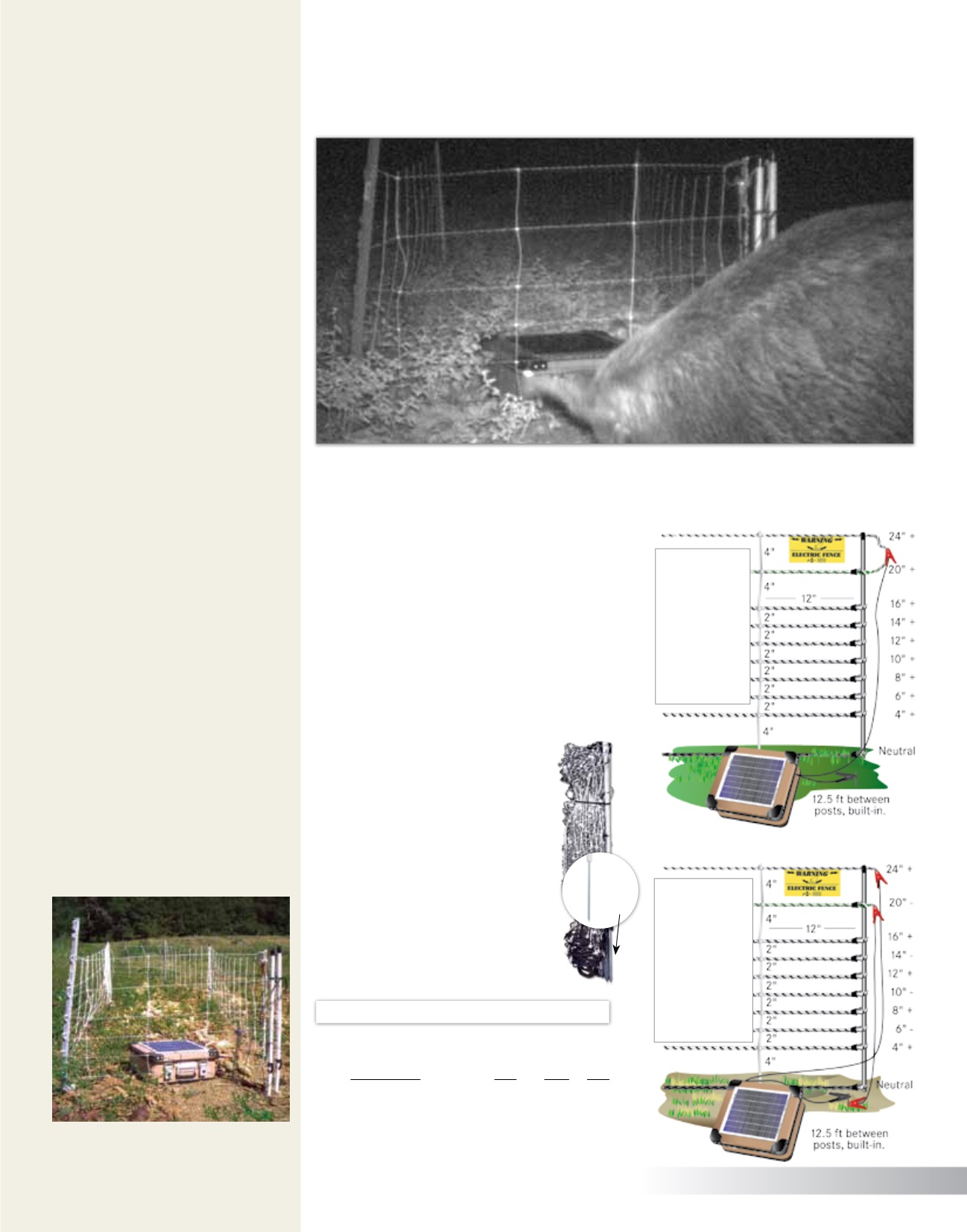 www.premier1supplies.com
www.premier1supplies.com
• 1-800-282-6631 HOGNET FENCES 61
SS
= Single spike line post
PN
= Pos/Neg
Energizers & recommended accessories
Product Name
Item Price Pg #
Battery, Plug-in or Solar Energizers.......................................79
5-Light Tester, 0.24 lb......................#134100 $11.50 103
Warning Sign, 0.06 lb......................#346000 $0.97 137
PowerLink, 30", 0.20 lb...................#335500 $4.50 137
FiberTuff Post, 24", 1 lb...................#208056 $3.45 123
HogNet ™ 10/24/12Semi-Permanent
Premier’s experiment
We experimented 4 years ago
with domestic Pig QuikFence
(pp.
62-63)
for stopping feral hogs in
Alabama. An experimental net was
installed around a baited site that
wild hogs frequented.
It worked for 10 days—then failed.
Why? 2 causes:
1. The space under the suspended
lower wire was too large (6")—
allowing the hogs to reach
under the fence with their
snouts to reach the corn inside
the barrier.
2. Hogs are known for surging
forward instead of backward
when shocked.
When a lead hog pushed its nose
under the fence, it received a shock
and reacted by charging forward—
taking the net with it.
We modified our netting design
to prevent the hogs from poking
their snouts under or through the
electric netting before receiving a
shock, then tested the new design.
HogNet 10/24/12is the
result of our experiment…
It can be used to keep hogs out of
gardens, lawns, fields and pastures.
HogNet is 24" tall. (Hogs can’t
jump, so it does not have to be tall.)
Has strutted verticals and 10
horizontal strands. Bottom strand is
neutral and rests on the soil/grass.
Lowest live strand is only 4"
above it. The next 6 live wires are
only 2" apart.
It can be easily changed to a
Pos/Neg system if/when the soil
becomes dry or is sandy.
The fence is as visible to hogs at
night as possible (contrasting black
and white).
HogNet 10/24/12 • 10 horizontal strands. • 24" tall. • Vertical struts every 12". • Posts (built-in) every 12.5', .5" dia. • Post spikes (SS): .26" dia. 6" long. Net is a pain barrier. So it must be properly electrified in order for it to be effective. 100' x 24" (SS) (PN), 7.50 lb....#208066 $97.00 50' x 24" (SS) PN), 4 lb............#208065 $69.00Photo taken with a trail camera. Feral hogs avoided the baited test site for a few days after Pig QuikFence (6/30/12)
was installed. Eventually they approached it—and found a way to “conquer” this design. So we made changes to the
fence. The result is HogNet 10/24/12—shorter with more live wires.
Hook up for
dry conditions
Connect energizer
fence lead to
positive “+” net
clip and energizer
ground lead
to ground rod.
Then connect a
PowerLink from
negative “-” net
clip to ground rod.
Hook-up for
moist conditions
Connect both
net clips
together and
attach energizer
fence lead to
net clips. Then
attach energizer
ground lead to
ground rod.
A netting test site in Alabama. Ear corn was
placed in and around it to attract feral hogs.
To purchas
e HogNet 10/24/12…1. Measure the fence line.
2. Choose the length and the amount of
netting needed.
Example: A 150 ft fence
requires one 100 ft net and one 50 ft net.
3. Choose support posts
for ends, major
curves and corners.
(see pp. 121-127)
.
4. Select an energizer, ground rod and a
fence tester
(pp. 79–103)
details plug-in,
battery and solar fence energizers.
Cost: as low as 97¢ per ft
Learn netting (types/posts/spikes), pp. 10-12, 104-115
(SS) =
Single
Spike
Posts









